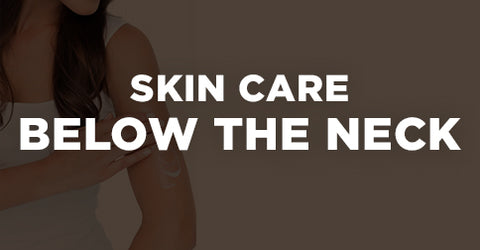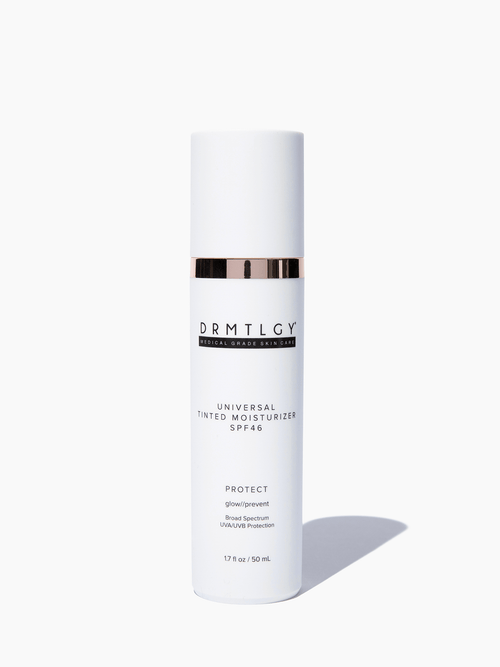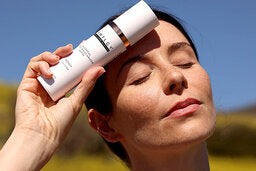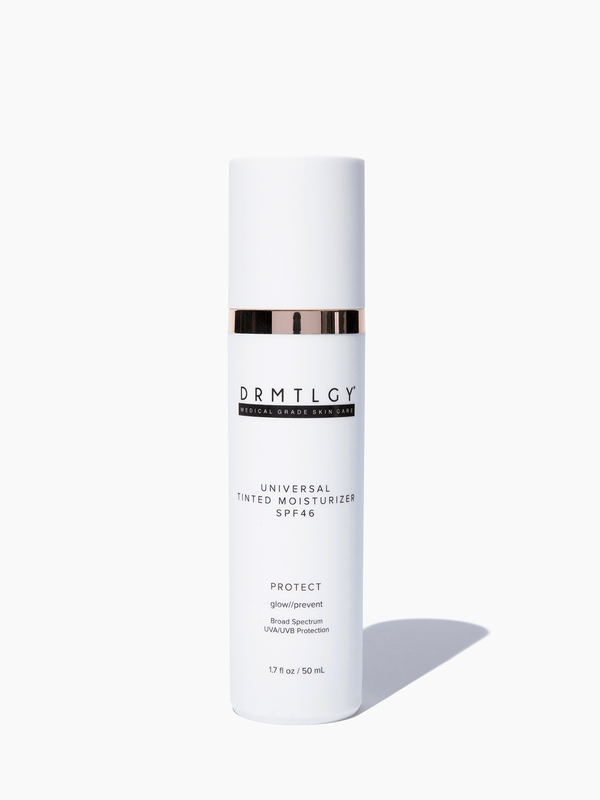
It goes without saying that most of the conversation about skin care is in regards to the face. It makes sense, too; our faces make first impressions, and they tend to be what we focus on when we look in the mirror, so they’re naturally our primary concern. Plus, the majority of skin care products are formulated with the face in mind.
But too often we neglect the rest of our skin. And while the thought of a full body routine may sound daunting, it’s less work than you’d think, and your hands, arms and neck will thank you for doing it. Here are some ways to care for your skin, below the neck.
Cleansing
Just like any routine for your face, cleansing is the first step to healthy skin all over your body. And while it’s likely that you’re already showering daily, there are some simple changes that could greatly benefit your routine.
- Lower the temperature. We love long, hot showers. Sadly, our skin does not. While it’s fine to throw one in from time to time, your everyday showers should be on the cooler side. Aim for just warmer than lukewarm, and shorten your shower duration to about 7 minutes. Not only will this help keep your skin supple and soft, but you’ll be cutting down on excess water usage.
- Skip Bar Soap. Bars of soap (think $5 three-packs from the drugstore) are harsh. The majority of them tend to clog pores, dry out skin, and can cause redness and irritation. Try a moisturizing body wash and you’ll feel the difference.
- Got Acne? Use the right soap. Body acne is incredibly common, and as such, a widespread nuisance. Not all body washes were created equal, so look for something that was formulated for your skin. For instance, our Gentle Acne Cleanser contains salicylic acid, as well as 16 botanicals to clear up your skin, without drying it out.
- Exfoliate, but don’t overdo it. Removing dead skin cells and unclogging pores is as important for our bodies as it is for our face. Use a gentle exfoliator in the shower twice per week, but be sure to follow it with a hydrating body lotion, as over-exfoliation can lead to dried out skin.
Moisturizing
Moisturizing your body is as important as moisturizing your face. After you’ve showered, apply a body lotion or cream all over before your skin has fully dried. This will help lock in moisture, strengthening your skin’s natural barrier, and keeping skin soft and smooth. Let it absorb fully before putting your clothes on.
Hand cream is also a vitally important step. Our hands are the first part of our body to show our age, which is largely due to the fact that the skin on the backs of our hands is so thin. Hand creams enforce the natural barrier on the outer layer of our skin, helping them stay soft, yet tenacious, and warding off age spots.
Little Red Bumps
Have you ever noticed the formation of little red bumps around your body? Not acne— just small, hardened bumps? These, too, are very common, particularly around the upper arms and thighs. They can be caused by any number of things, but most commonly are results of clogged pores, ingrown hairs, or keratosis pilaris.
There are different approaches to treating them, but we recommend finding a body lotion with a fairly high percentage of an AHA (lactic acid, glycolic acid). These lotions gently exfoliate and leave skin feeling exceptionally soft. Though keratosis pilaris does usually clear up over time, lactic and glycolic acids have been proven methods of expediting its treatment.
Sunscreen
As is the case with your face, sunscreen is the most important preventative measure you can take for skin. The most obvious signs of aging are usually a direct result of sun damage. Apply a broad spectrum sunscreen daily to stem off damage caused by UVA, UVB and infrared rays. Using a sunscreen like our Broad Spectrum SPF45 has the added bonus of anti-aging ingredients, like hyaluronic acid and niacinamide.
Dark Spots
It’s not uncommon to develop dark spots on our skin as we age, especially on areas that are regularly exposed to the sun— hands, arms, legs. Daily use of sunscreen will make a world of difference in combating dark spots. Even if you’ve already developed some, start using sunscreen daily to prevent more from popping up.
The most effective treatment for established dark spots is hydroquinone. Apply spot treatments to the affected areas, but be sure to follow it with sunscreen, as hydroquinone tends to make skin more susceptible to sun damage. More information on dark spots and how to fix them can be found here.
The Journal of Dermatology, Jan 2018, pages 24-30
Journal of Cosmetic Dermatology, June 2018, ePublication
Indian Journal of Dermatology, May 2016, pages 279-287













